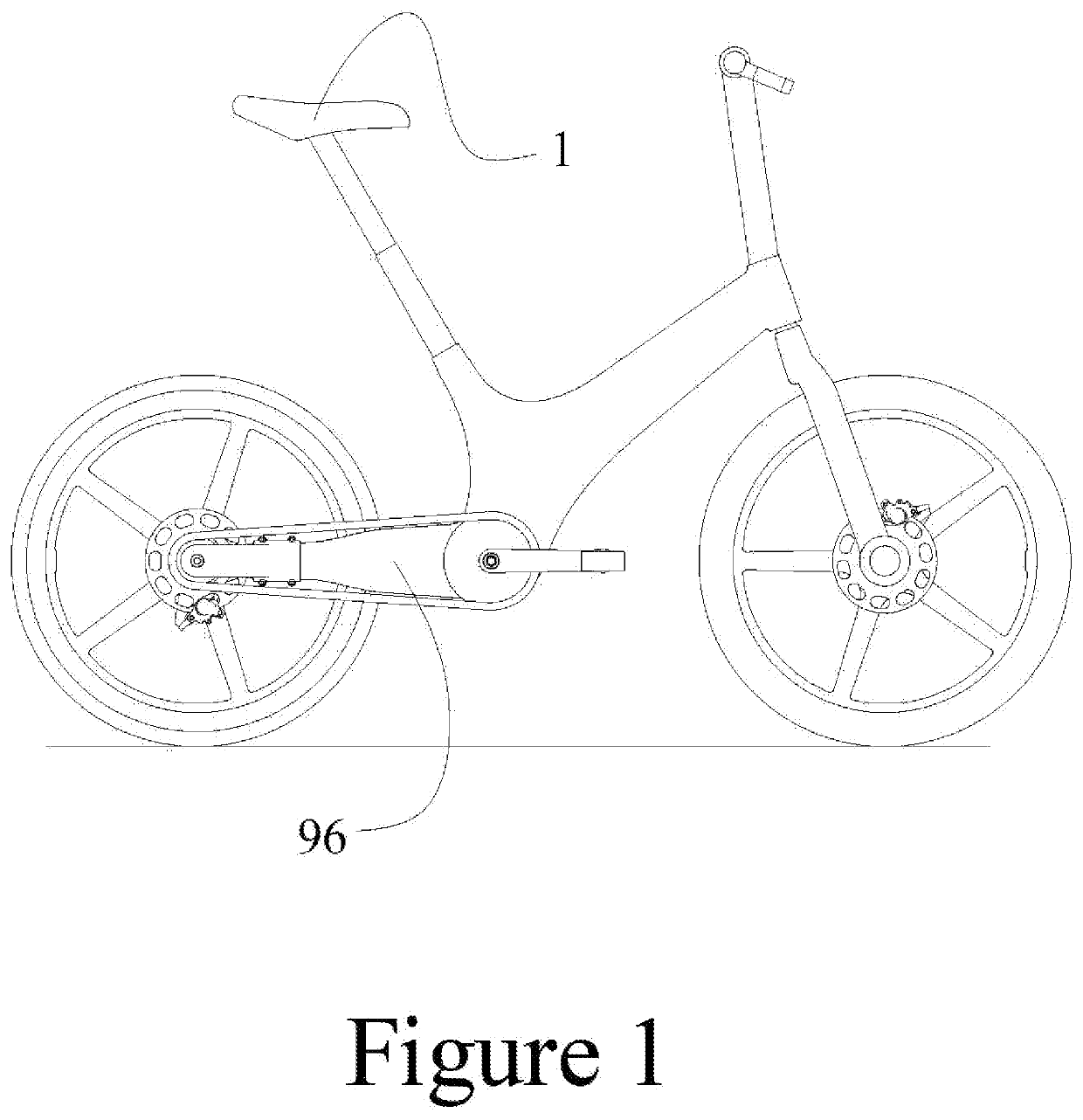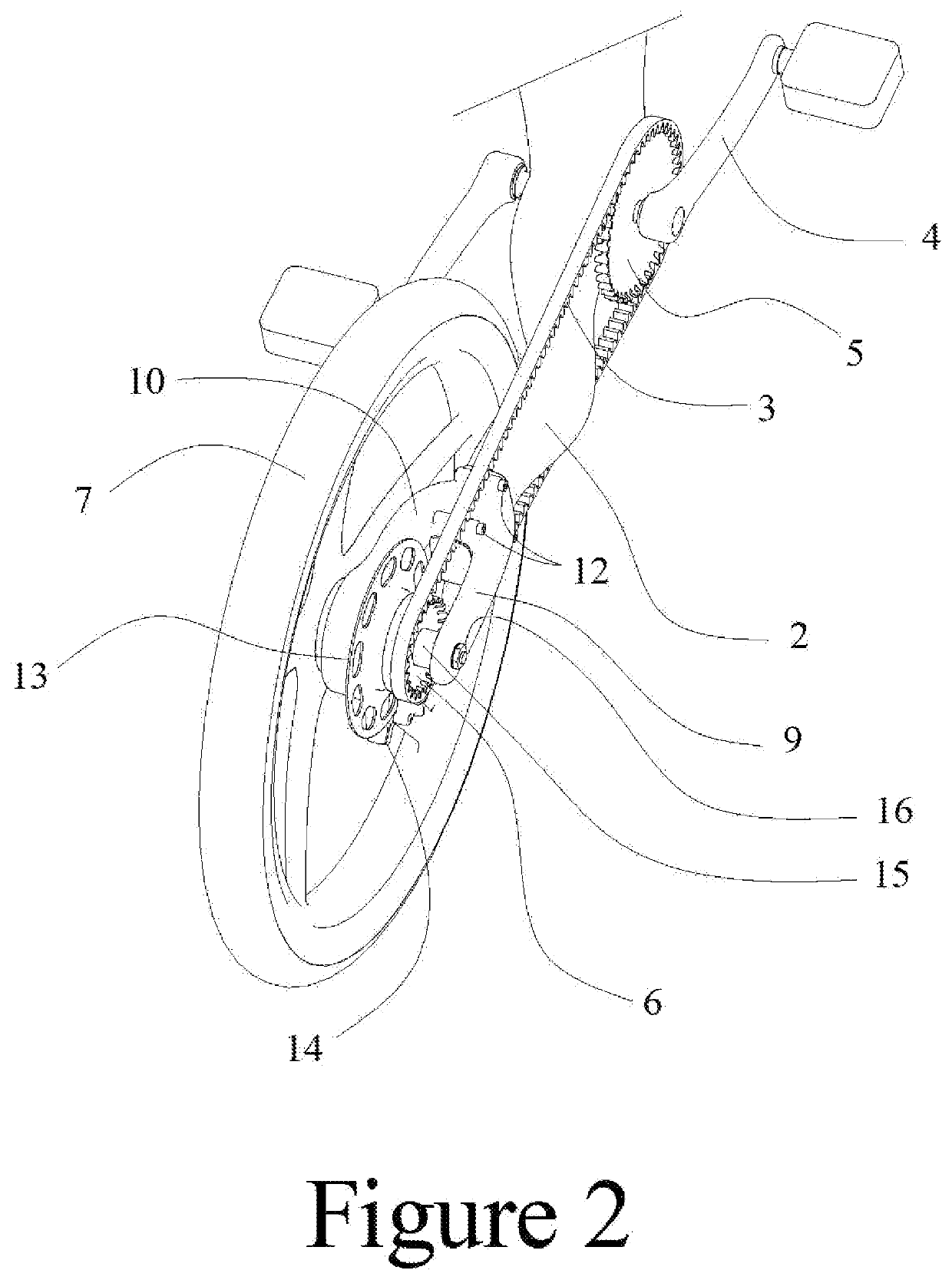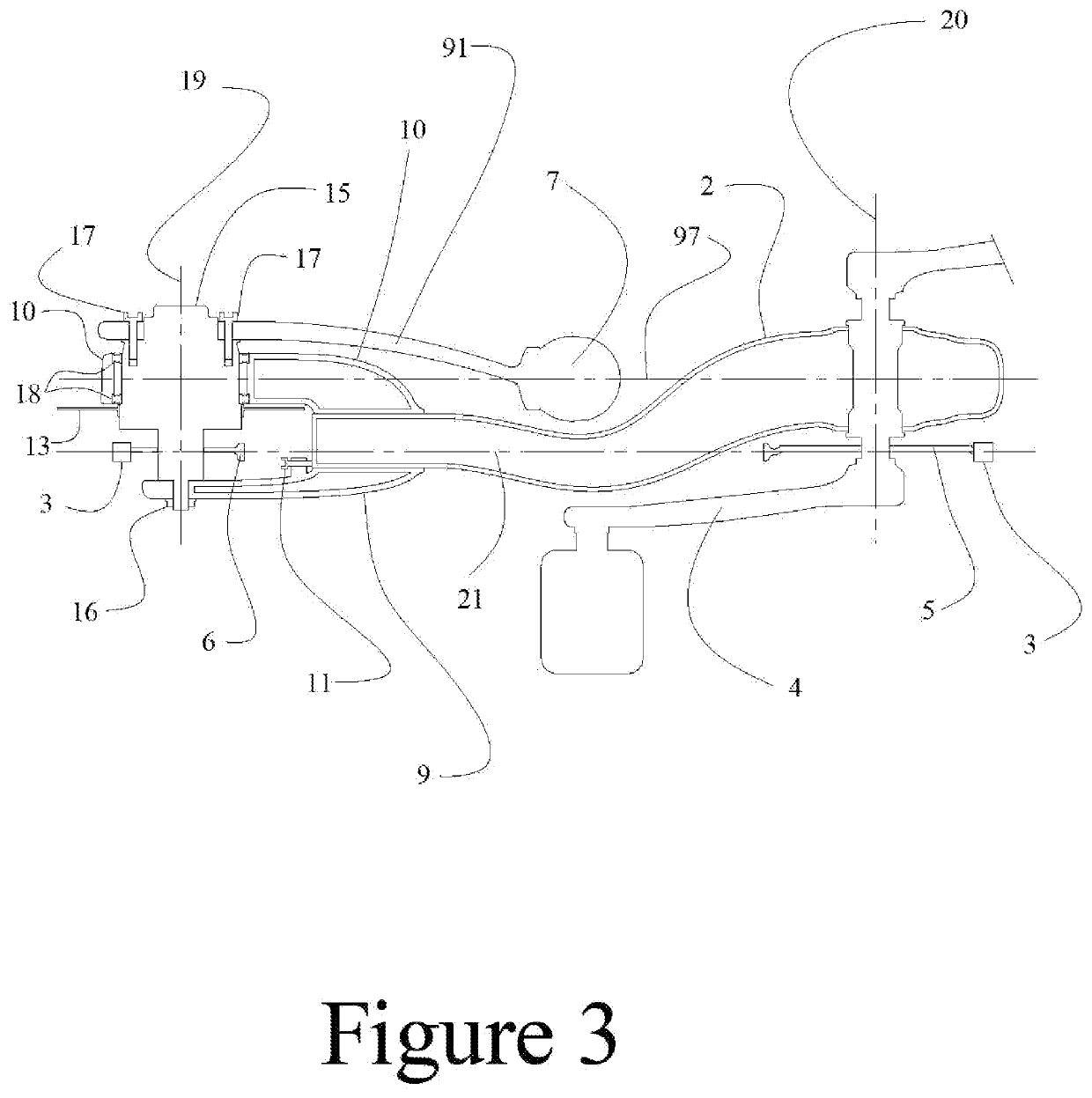However, bicycle roller chains have certain disadvantages such as requiring oil
lubrication to run efficiently and also to prevent
corrosion and
rust.
Over time, the lubrication will diminish through usage and weather conditions such as rain at which point, unless the chain is re-lubricated, the chain will rust or corrode and will tend to produce more
noise even to the point of squeaking.
Another problem with linked roller type chains is tendency for the rider's clothing to become trapped or drawn into the interface between the teeth of the driven and driving sprockets and the chain.
This overlapped has the drawback of essentially doubling the thickness of the protective chain cover wall section and therefore the protective chain cover is required to be even larger beyond the outer perimeter of the
chain drive when viewed from the side.
However, with regards to the field of pedal operated cycles such as bicycles, belt drives have certain drawbacks when compared to linked roller chains.
A noticeable drawback of the eccentric bottom bracket type adjustment is that the axis of the front driving sprocket varies in position vertically as well as fore and aft.
This can cause alignment issues where vertical space constraints exist along the upper and lower belt lines.
Another drawback of belt drives compared to linked roller type chains is that they are wider.
This can prove problematic for designers in that the critical so called “chain line” of the bicycle requires careful consideration in order to have sufficient clearance between the belt and the rear tyre, the frame, pedal cranks, and gear components and also be positioned for ergonomic and efficient, comfortable pedal
crank operation.
Belt drives are not suitable for multi-speed derailleur gearing systems due to the fact that they are not laterally compliant, they are of
fixed length, and require precise tension to operate efficiently.
Bicycles fitted with a
belt drive have an additional complication and drawback relating to fixing a flat tyre on the rear driven wheel because removal of the rear wheel requires release and re-adjustment of the belt tension during the process.
Belt drives also suffer from the same problem as linked roller chains of the possibility for the rider's clothing to become trapped between the belt and the sprockets.
Whilst the popularity of belt drives is increasing, designers have not widely addressed this key drawback by adding a protective belt cover.
The main reason for this is that due to the greater width of the belt compared to the linked
roller chain, a protective
belt drive cover of the traditional design variety used on linked
roller chain bicycle becomes too large and bulky to be commercially appealing.
The need to join the cover with an overlap joint further increases the size of the cover and has the drawback of
trapping water within the cover.
Furthermore, joined up enclosed covers can resonate more
noise than open covers.
This results in an even larger protective belt cover than traditional protective chain covers and is generally accepted as undesirable to the rider, being visually bulky and unappealing, adding undesirable cost, and adding undesirable weight.
Traditional dual side mounted wheel bicycle frames have the drawback of not allowing a flat tyre to be fixed while the wheel remains fitted to the bicycle.
However, detaching the rear wheel of a dual side mounted wheel bicycle is usually a much more complex, messy, and cumbersome operation resulting in soiling of the user's hands or clothing with oil or
dirt from the rear derailleur gearing and
chain system.
There is the added complication of ensuring the
braking system is released in order to remove the wheel and then re-adjusted safely after the wheel is re-fitted to the frame.
On traditional dual side mounted wheel bicycle frames that employ a rear wheel bicycle planetary style multi speed gear hub there is the added complication of the user needing to adjust the chain or belt tension usually with so called “horizontal rear dropouts” or an eccentric bottom bracket adjustment arrangement.
A further
disadvantage of dual side mounted wheel frame designs is apparent when fitted to folding type bicycles that have folding hinge mechanisms that position the front and the rear wheel in a co-axial configuration when folded.
The dual side mounted wheel frame increases the width of the folded bicycle across this folded wheel axis making the folded bicycle
package envelope larger and more bulky which is un-desirable.
While some Strida™ bicycle models have a multispeed planetary gearing
system mounted coaxial with the pedal
crank assembly axis, they are mostly all single speed in configuration and none have a multispeed planetary gearing
system mounted coaxial with the rear wheel.
The drawbacks of multispeed planetary gearing
system mounted coaxial with the pedal
crank assembly axis are high cost,
high weight, and with the exception of the
Pinion℠
gear system, limited gearing of two or three gears with limited total gearing ratios of usually less than 200%.
Whilst the configuration offers efficient positioning of rear wheel
assembly vertically and longitudinally, the drawback of the Strida™ non-cantilevered rear frame configuration is that it has very low torsional stiffness and
lateral stiffness.
 Login to View More
Login to View More  Login to View More
Login to View More 


